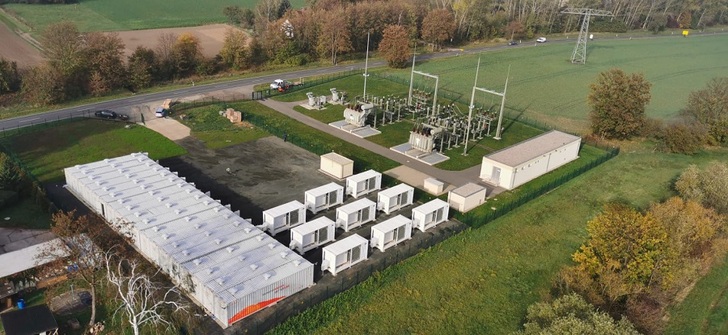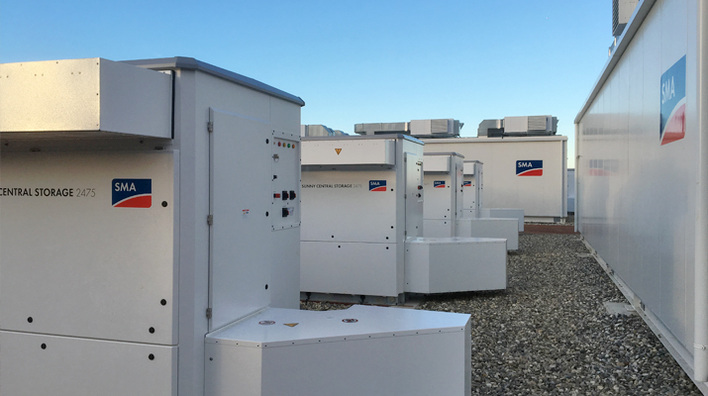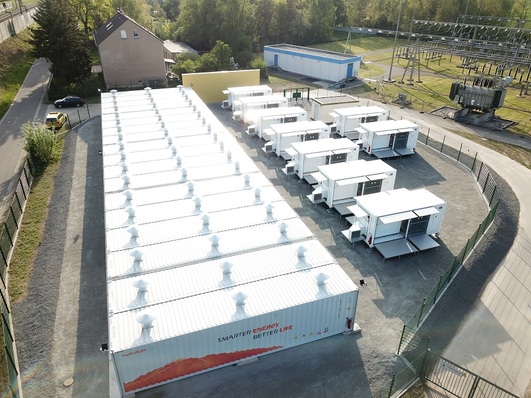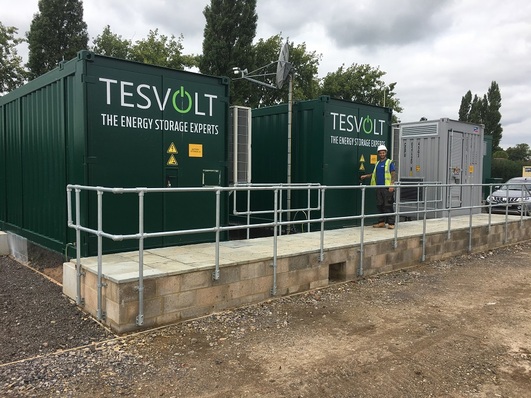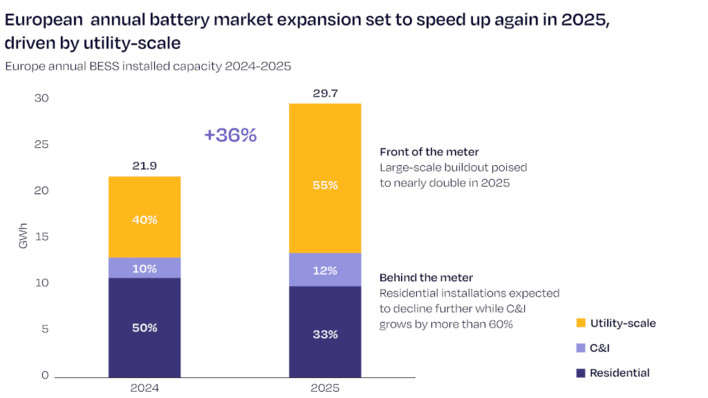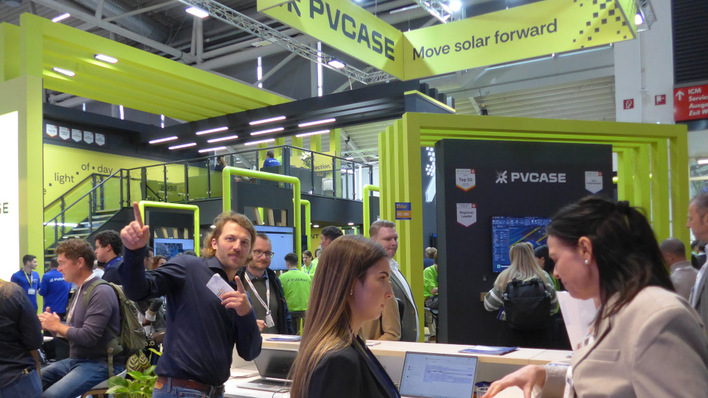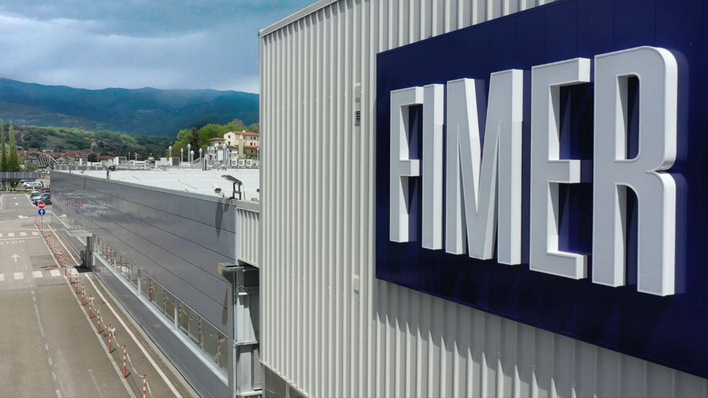October 29th the battery storage was officially put into operation by the management of the Upside Group from Dülmen/Germany and the network region manager of MITNETZ STROM, Uwe Härling.
"The aim of this large storage facility is to stabilise the frequency in the power grid and thus the creation of a basic prerequisite for reliable energy supply. Due to the growing importance of electromobility and the decision to phase out nuclear power and coal rapidly, this task is becoming increasingly important. Our systems are already now in operation day and night and support the European grid frequency several hundred thousand times a year," stresses Marc Reimer, Managing Director of Upside Invest.
Grid control power
The battery storage system will provide control power for the envisaged project duration of 20 years and thus stabilize the grid frequency. While the mains frequency moves most of the time between 49.95 Hz and 50.05 Hz, it has been repeatedly coming into regions endangering the power grid for several months. After several strong deviations in autumn 2018, all mains frequency monitors sounded the alarm in January. On January 10th, the frequency dropped so sharply that the critical 49.8 mark was reached at the lowest point. With only one mHz less, serious measures would have had to be taken to prevent a major network disruption. A similar incident occurred just earlier this month and gives cause for concern. Tino Marx, managing director of the project developer and operator, therefore emphasizes the importance of using large storage facilities in the network. Since a constant frequency holding is not possible due to volatile generation and consumption, external readjustment is constantly necessary.
Fast response of milliseconds
Batteries can do this much better than other technologies. In addition to unbeatably fast response times of only milliseconds, it is also much easier for the battery to provide control power because there is no need to generate electricity first, but excess electricity is stored temporarily if the frequency is too high. If the frequency is too low, this current is returned to the grid. The battery is always half fully charged and reacts in the required direction - fully automatically, 365 days a year. Extremely powerful inverters from the Kassel-based world market leader SMA are responsible for the necessary conversion of alternating current from the grid into storable direct current.
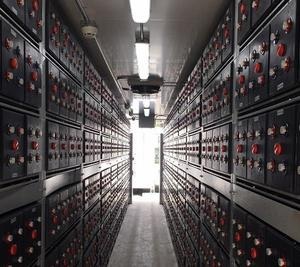
10,584 batteries with a storage capacity of 25 MWh
The Upside battery storage system consists of 18 40-foot high-cube containers from joint venture partner Narada Inc., which are filled to the roof with battery cells. The total of 10,584 batteries with an individual weight of 90 kg have a storage capacity of 25 MWh. "This could supply all households in the Groitzsch community with electricity for 8 days and thus survive any calm wind - a first step towards realising the vision of an energy self-sufficient supply with self-generated electricity", explains Prof. Dr. Wojanowski, authorised signatory of the Upside.
Battery as climate protector
The Groitzsch battery storage avoids about 66,000 t CO2 per year. This avoidance performance corresponds to that which would be achieved if 50,000 cars were converted to electric drive. Through his three battery projects in the Leipzig area alone, the investor Upside has mathematically converted more than half of the cars in the Saxon state capital to electric drive.
Installation directly at the substation
Upside developed and implemented the Groitzsch project in the 20 kV network of the probably most innovative German distribution network operator MITNETZ. The open space created by the dismantling of an old switchgear house on the transformer station site was used to install the battery storage in the immediate vicinity and to integrate it into the medium voltage of the transformer station. The connection, virtually at the heart of the distribution network, enables not only integration into the control power network, but also the immediate provision of further network services. In this way, the Groitzsch battery storage facility contributes to grid relief in the entire region.
Project pipeline
After two large storage projects in Brandenburg, the project in Groitzsch is identical in construction to the battery storage facilities commissioned by Upside last year in Langenreichenbach and Bennewitz. The building permit for a further 16 MW lead-carbon storage facility in the Leipzig area was granted last week. Its commissioning is planned for Q1 2020. (HCN)


